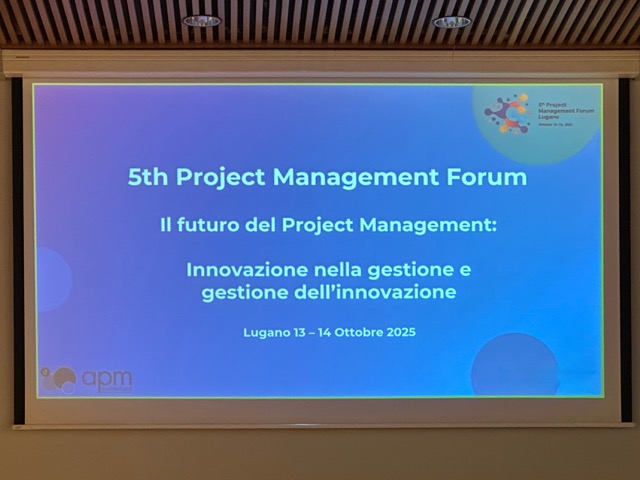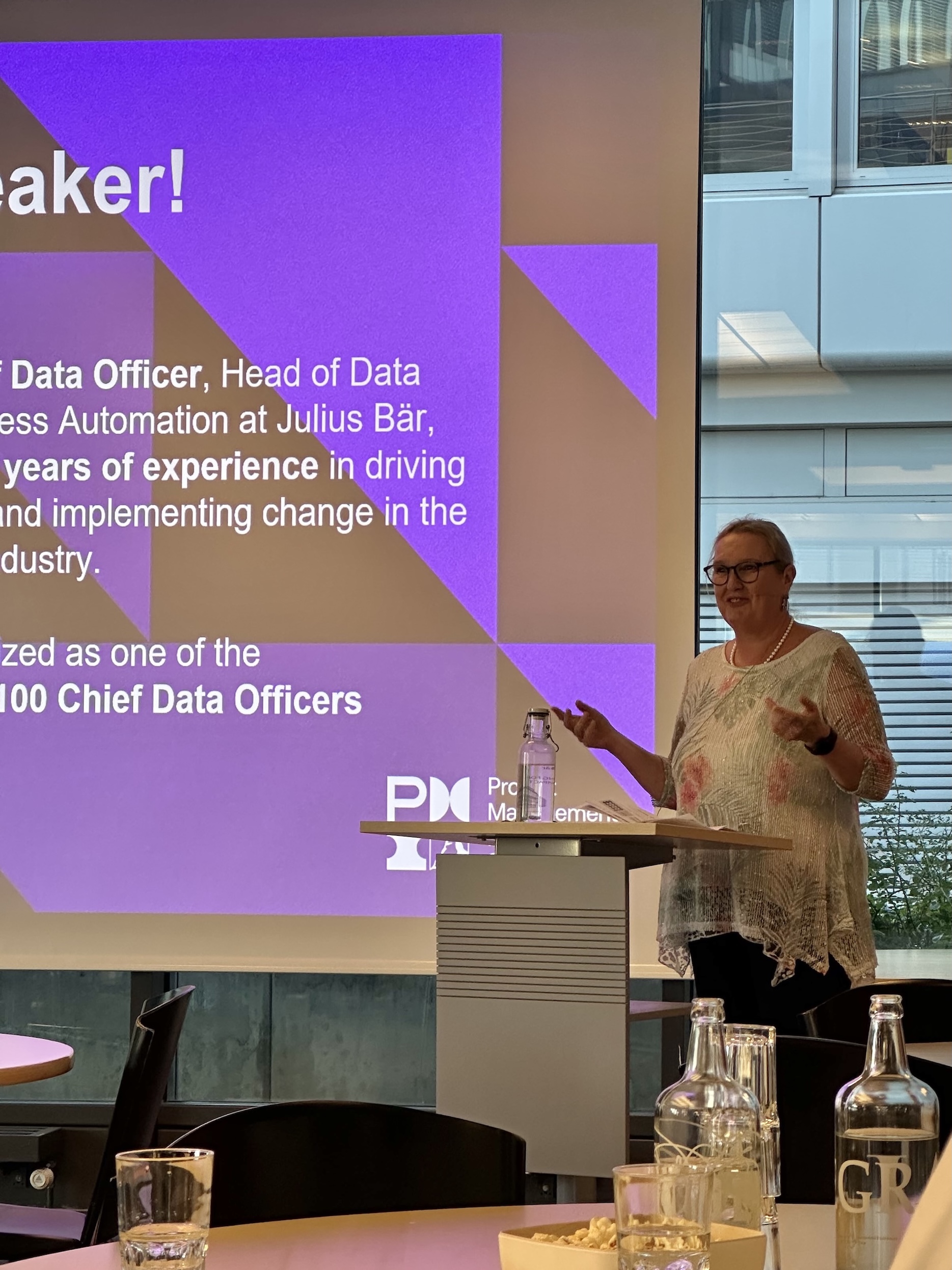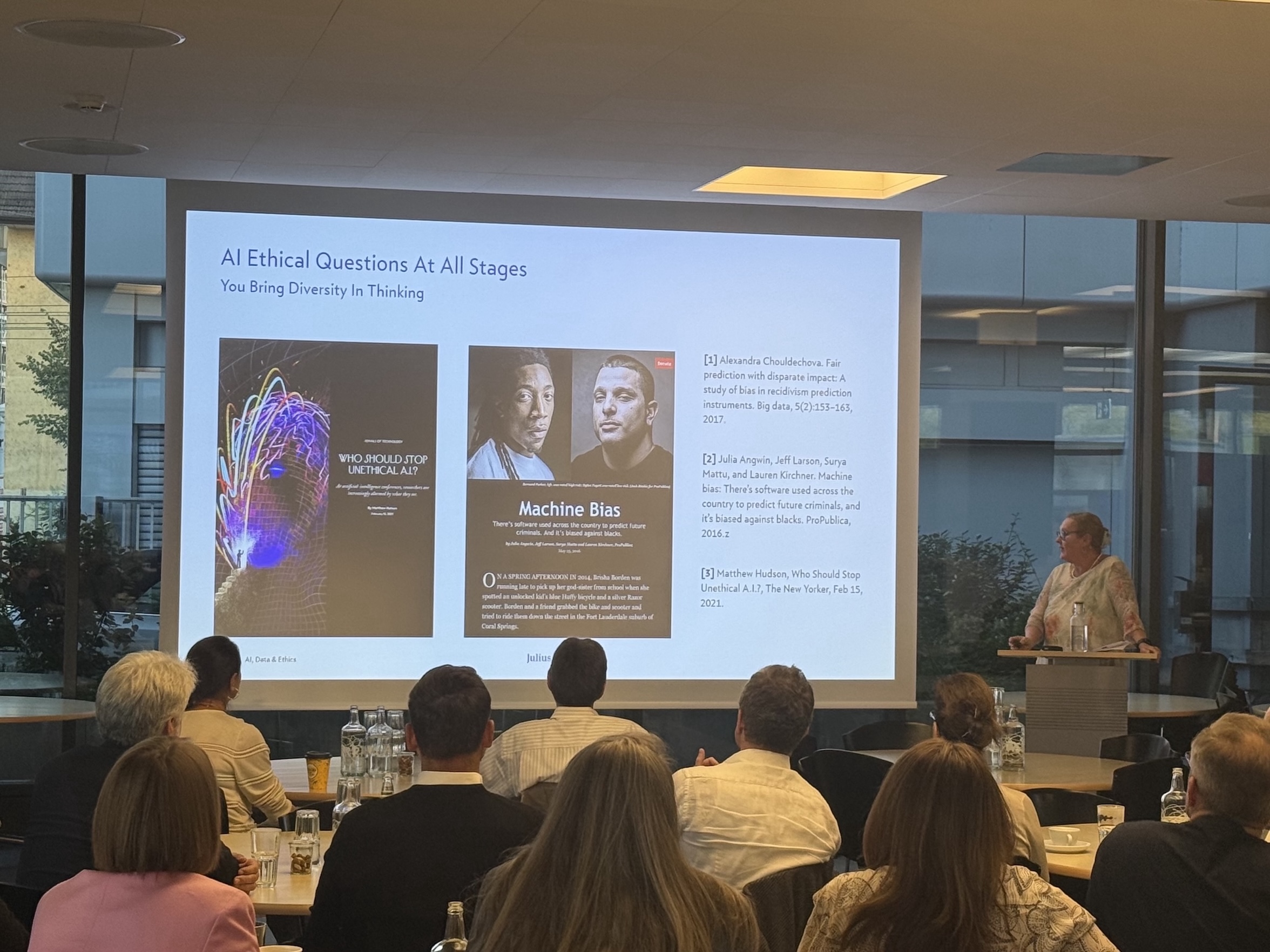
Author: Mariia Fufaieva, PMI Switzerland Anniversary Team
An interview with Dr. Andrea Behrends
As the PMI Switzerland Chapter prepares to celebrate its 25th anniversary in March 2026, it’s the perfect moment to look back at how it all began. We spoke with the chapter’s first president, Dr. Andrea Behrends, to reflect on the vision, challenges, and proud achievements of its early years. Did the founders’ hopes come true? What lessons remain relevant today?
Here is her story.
Founding Vision & Early Days
A bold idea became a lasting network.
Q: Dr. Behrends, how did it all begin?
At the time PMI Switzerland Chapter was founded, I was working at Novartis in Basel. Back then, the typical path for any young, ambitious employee seeking greater responsibility was to climb the management hierarchy. However, a new alternative was emerging: managing projects. This quickly became recognized as a parallel leadership path, especially for those with technical or scientific expertise.
A notable example within Novartis was Jörg Reinhardt, chairman of the board of directors for 12 years. At the start of his career, he successfully led a project in drug development – so I have been told many times – and with that became highly visible in the company. For Jörg Reinhardt, it meant a short-cut to higher leadership ranks, and he was much admired for it. His success story underscored the potential of project leadership as an alternative to progressing through the classical hierarchical steps.
I became deeply interested in advancing this dual-track approach within Novartis. The company sent me to the United States to learn about PMI and the PMBOK® Guide. My role was to design and implement a comprehensive project management training curriculum across the organization, consisting of seven progressive levels, including certification, tailored specifically for technical and research professionals.
Founding the PMI Switzerland Chapter felt like the natural next step — to support the growing community of project managers in the country and promote project leadership as a recognized and respected career path.
Q: What moments from the chapter’s founding stand out as particularly memorable?
The founding process was fairly administrative, involving extensive legal considerations. But one moment stands out vividly: our first public meeting.
It took place at a Novartis facility in the Schoren district of Basel — somewhat remote and not particularly accessible. I remember someone commenting that it was overly optimistic to expect the necessary quorum of 24 participants to form a founding member. I started to doubt myself.
But then, to my surprise and relief, between 30 and 40 people showed up from all over Switzerland. It was a powerful and emotional moment. The enthusiasm in the room made it clear: there was a real demand for a professional project management community.
Q: What did you hope the chapter would contribute?
I hoped the chapter would help promote the dual career ladder concept across Swiss organizations, giving ambitious professionals — especially those with technical backgrounds — more pathways to leadership.
Project management offers a unique opportunity for early leadership development. It allows subject matter experts to take on responsibility in a practical, results-driven context. In many cases, project management training feels more intuitive and applicable than traditional management training, particularly for scientists, engineers, and researchers.
Ultimately, the chapter should become a place where sharing of experience, exchange of tools and techniques, and building a strong network could take place easily.
Building a Team and a Community
Project leadership can be as powerful as climbing the management ladder.
Q: As the first president, what were your priorities?
My leadership style has always been participative. I didn’t see myself as the one leading the team, but rather as primus inter pares — first among equals.
We were all volunteers, doing this in our free time. So, I established a guiding motto: “We’re doing this after work, by choice, without pay — so let’s make it enjoyable!”
Creating a positive and enjoyable atmosphere was a priority. Humor played a big role. So did food. In the summer, I’d invite the team for a swim in my pool. That resulted in great memories and strong bonds.
Our first practical goals were visibility and financial sustainability. We built a website and engaged our personal networks for support. Rather than relying on high membership fees, we introduced a tiered sponsorship program — Silver, Gold, and Platinum — and approached companies we were connected to. It worked well for our grassroots beginnings.
Q: How did you keep volunteers motivated?
We were a small group at the start, which made it easier to form personal connections. Friendships naturally developed, and that sense of community was incredibly motivating.
Everyone involved was passionate about project management and genuinely wanted to contribute. That shared purpose, combined with project management competency and a good dose of fun, kept the momentum going.
Looking Ahead: PMI Switzerland in the Next 25 Years
Friendship and fun were key to keeping volunteers motivated.
Q: How do you see PMI Switzerland evolving?
Many companies in Switzerland have now embedded project management competencies into their organizational structures. With markets and technologies evolving so quickly, more organizations are adopting a projectized approach to remain agile and responsive.
I believe PMI Switzerland can play a crucial role in this — e.g. by serving as a hub for project talent and offering valuable possibilities for benchmarking and communities of practice.
Looking ahead, I hope PMI Switzerland remains a place where professionals from all backgrounds can connect, grow, and shape the future of work through project excellence.
Dr. Andrea Behrends’ shares a rare glimpse into PMI Switzerland’s origins and the passion that brought it to life. As we celebrate 25 years in 2026, her story reminds us how vision, leadership and community can create something lasting.
Join us on 6 March 2026 at 17:00 to meet Dr. Behrends and other leaders who shaped our journey.
…and because this is a very special occasion for us, we are also encouraging PMI members who join us to bring their spouses or partners.
Registration will be open very soon— stay tuned!
Mariia Fufaieva, Anniversary Team

 This event is going to be held in French
This event is going to be held in French 





 Sarah reminded us that artificial intelligence is no longer a futuristic concept. It is already influencing how we manage projects, make decisions, and design services. Yet with opportunity comes responsibility. Using vivid real-world examples, from biased algorithms to data-driven decision pitfalls, Sarah demonstrated how ethical awareness and good data governance are becoming critical project-management skills.
Sarah reminded us that artificial intelligence is no longer a futuristic concept. It is already influencing how we manage projects, make decisions, and design services. Yet with opportunity comes responsibility. Using vivid real-world examples, from biased algorithms to data-driven decision pitfalls, Sarah demonstrated how ethical awareness and good data governance are becoming critical project-management skills. The networking apéro that followed gave participants a chance to exchange experiences, debate real-world challenges, and connect with fellow practitioners passionate about shaping trustworthy innovation.
The networking apéro that followed gave participants a chance to exchange experiences, debate real-world challenges, and connect with fellow practitioners passionate about shaping trustworthy innovation.